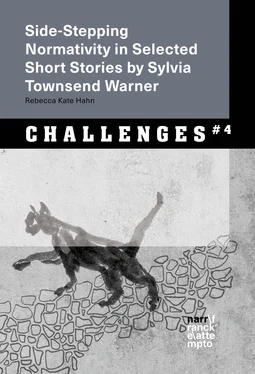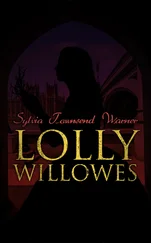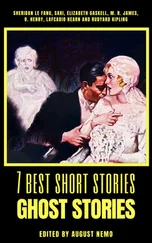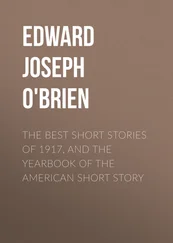The complexity of her writing – her crossings of genres and genders; her learned but seemingly offhand allusions to literature and history; her sexual, feminist, communist, anarchist radicalism – is perhaps a cause of the simplification in much of the writing about her. ( Lesbian Empire 2–3)
Wachman believes that many readers readily allow the seemingly straightforward texts to deceive them, dismissing them as nothing out of the ordinary. Short story readers often approach short stories metaphorically to find a hidden meaning. However, with Warner’s stories this approach does not work, since her stories are not riddled with symbols, images, or metaphors, but characterised by a clear structure which explores aspects of human (or, in her later stories, elfin) life in a very rational way. In addition, Warner’s prose is very clear and devoid of long, complicated sentences obscuring the plot. Consequently, the reader may be fooled into thinking that some of Warner’s stories are too simple, too ordinary.
Not only reviewers, but also literary critics have found it difficult to classify Warner’s work, much as they admire her writing. In 1967, in a tongue-in-cheek manner, William Maxwell, Warner’s editor at The New Yorker , writes to Warner,
I shall tell her [Professor C.D. who wants to write a book about Warner] that the novels are a work of a secret society, each being by a different hand, which is why they are so different from one another. And that there is an affiliated sub-secret society that is responsible for the stories. I shall hint, rather heavily, that I belong to the latter and am the author of The Cat’s Cradle-Book . And that the greatest of all your books is unpublished, waiting in the British Museum – a four volume novel about Richard IV of England, the facts of whose reign were suppressed, in all the history books, by Cardinal Wolsey, for political reasons. ( The Element of Lavishness 172)
Warner was an extremely prolific writer of many genres, and, as Glen Cavaliero notes, “[…] a writer who stubbornly resists categorisation” (209). As Maxwell recounts, Warner’s first short story “My Mother Won the War” was published in The New Yorker in 1936. He adds that, “Over the next four decades The New Yorker published one hundred and fifty-four stories by Sylvia Townsend Warner, and nine poems” (“Sylvia Townsend Warner and The New Yorker ” 44). Numerous other short stories have been included in collections, together with stories previously published in The New Yorker. Many more remain undiscovered in the Sylvia Townsend Warner archives.1 Warner also wrote seven novels,2 four volumes of poetry,3 a biography of T.H. White (1967), numerous newspaper articles, a great number of letters,4 and in addition translated Marcel Proust’s Contre Sainte-Beuve (1954) into English (1957). Although Warner published a considerable amount of literary work during the modernist era, she was never considered part of the literary canon of her time. Her indifference towards literary norms and expectations has posed a challenge for her critics who would like to assign her work to a specific genre and/or establish her as a writer of a movement. They have propounded different explanations for her absence from the canon and the lack of critical interest in her work. Claire Harman, for example, argues that “[…] the author’s name eludes recognition precisely because her oeuvre is so tremendously varied and, as a result, difficult to classify” (Garrity, Step-Daughters of England 147). Jane Marcus, who concurs with Harman, maintains, “Warner’s neglect is due in large measure to the fact that she was both a lesbian and an active member of the British Communist Party” (148). Jane Garrity believes that “[Warner’s] marginalization […] has at least as much to do with her narrative style itself, which consistently employs the props of traditional storytelling” (148). Warner was neither considered a modernist, nor a so-called ‘“writer of the 1930s”’ although, ostensibly, she resembles these writers in many aspects (Montefiore 143). As Janet Montefiore writes,
A publicly identified Communist and a distinguished writer of fiction and poetry, Warner is […] very close to the canonical “Auden Generation” male writers in terms of her class, culture and education; but like so many other women writers of the thirties, she belongs to the wrong sex and the wrong generation (she was born in 1893) – to be counted as a “writer of the 1930s” by the historians. (143)
Montefiore’s claim is still very accurate, although considerable effort has been made to re-evaluate the literary canon of the 1930s.5 Montefiore adds, “Moreover, the ironized traditional forms which she [Warner] chose to write in – lyric poems and a pastiche of Crabbe, short stories and historical novels set in unpopular periods – do not fit standard perceptions of thirties writing” (143). Warner not only ignores the conventions of the 1930s literary scene but also remains indifferent to the literary or stylistic conventions of the time. In line with Montefiore’s assessment, Robin Hackett writes that
Warner also seems to have lived the wrong kind of life to have been embraced by scholars of British modernism, left history, or feminist politics. She lived in London in the 1920s, was friends with Bloomsbury’s David Garnett and Steven Tomlin, once had lunch with Virginia Woolf, and later became friends with Leonard Woolf. But after the mid-1930s, Warner lived rurally and wrote about rural people, while modernism is often defined as exploration of urban lives and mechanization. (85–86)
Montefiore and Hackett both agree that Warner does not conform to the commonly held views about writers of her era. Apart from the fact that Warner was female, she was slightly too old to be considered a writer of the 1930s. Moreover, she did not show enough interest in the London literary scene and society, and in other London writers and intellectuals, to be grouped together with other modernist writers. Furthermore, her writing did not fall into the traditionalcategories of modernist writing. Ellmann puts forward the following reasons why Warner was not considered part of the Modernist canon:
Although Warner constantly experiments with form and content – her later novels subvert the convention of the hero, as well as the expectation of a climax and an ending, while her poetry shows a prosodic versatility akin to Auden – her grammar and sentence structure remain too orthodox to count as ‘modernist’. (Ellmann, “The Art of Bi-Location” 83)
Like Montefiore, Ellmann sees the reason for Warner’s exclusion from the canon in the author’s style – she is convinced that most critics think that Warner simply lacks the “verbal complexities of Joyce” (83). Ellmann is highly critical of the categories that have defined and continue to define modernist literature and writes: “A further reason of Warner’s neglect in the academy is the long-standing over-valuation of experimental Modernism” (83). Ellmann welcomes the fact that these categories are slowly becoming less rigidly defined and observes that “[in] recent years the stranglehold of Modernism has begun to loosen, enabling a wider range of writing and writers to re-emerge, especially women and minorities” (83). She firmly believes that “[t]he term ‘modernism’ has long since outlived its usefulness, having condemned many talents to obscurity” (“Sylvia Townsend Warner” 18). Like Ellmann, Garrity believes that Warner should be included in the modernist canon since “[her] fiction, far from conventional or conservative, frequently melds satirical fantasy, social realism, allegory, and literary allusion – always with a convoluted eye towards subversiveness” ( Step-Daughters 148). The following chapters examine the seemingly subversive elements in Warner’s short stories and show that they may indeed have a different quality altogether. Wachman further highlights the fact that Warner’s writing essentially blurs the lines of demarcation:
Читать дальше












